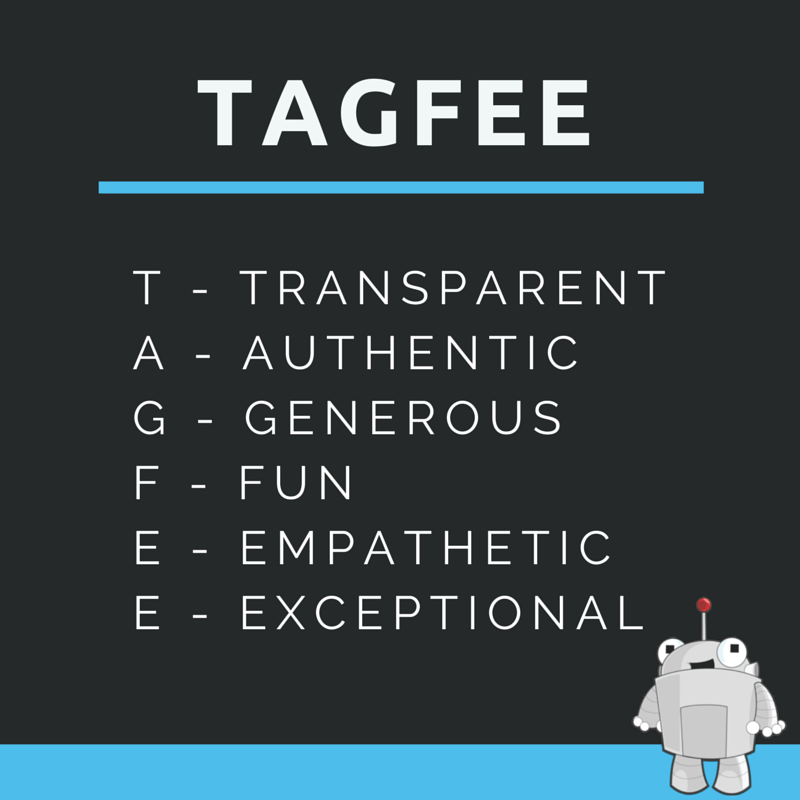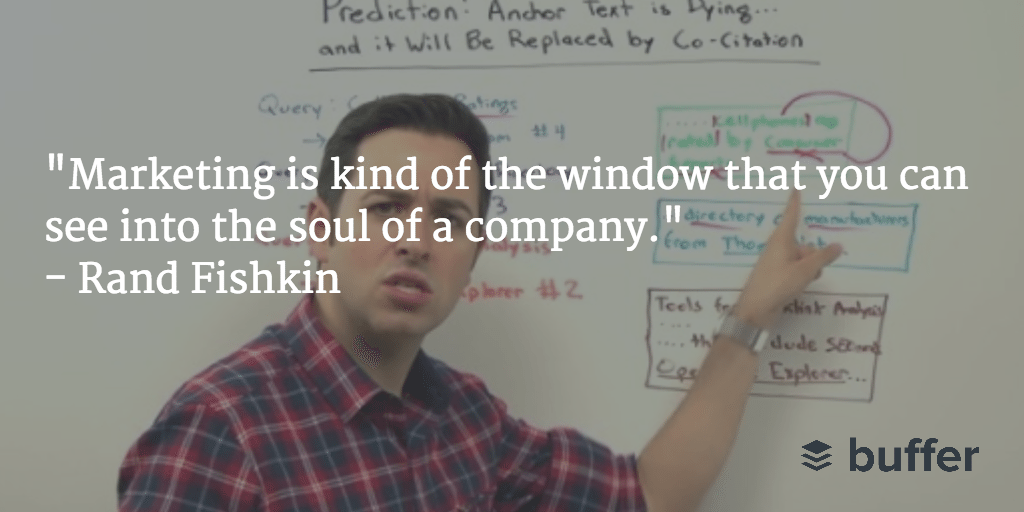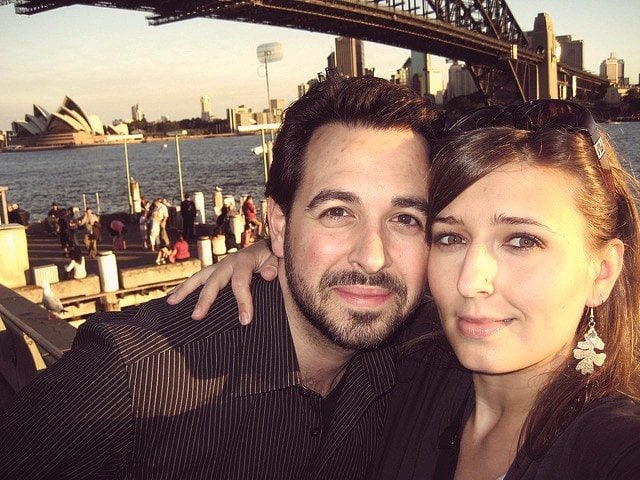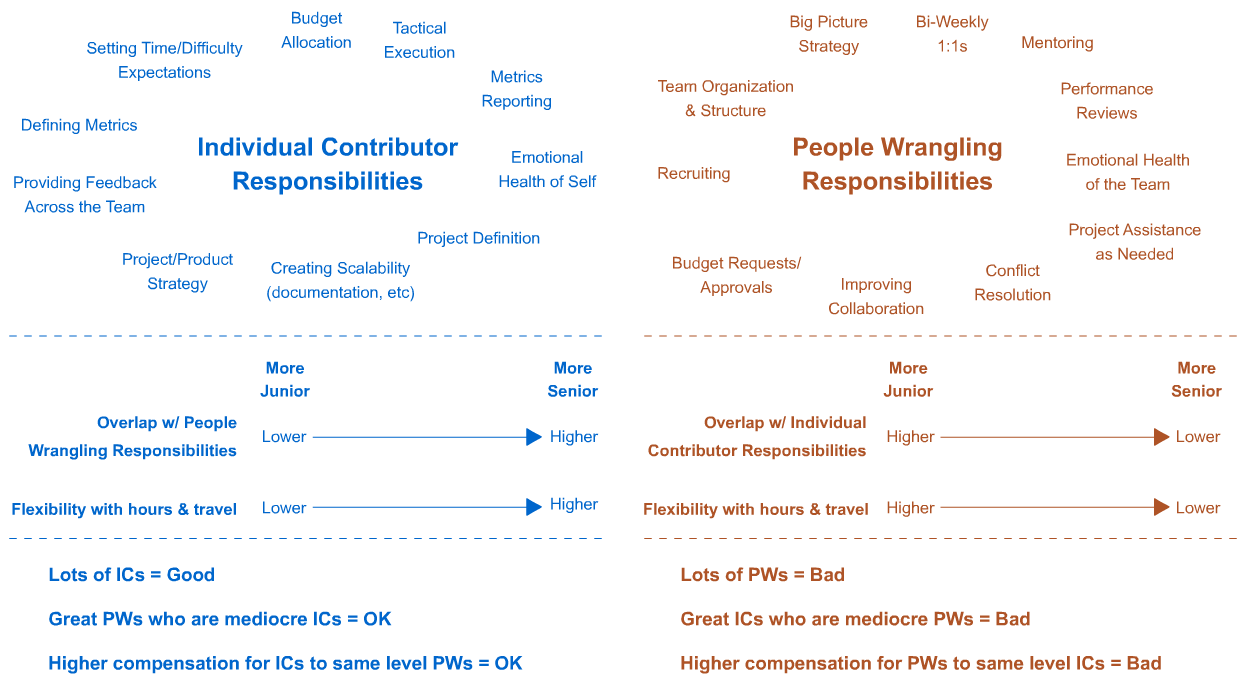Do you have a favorite author or blog whose content is always so amazingly useful that it earns an automatic read every single time something new comes out?
Rand Fishkin is one of those authors for me. And Moz is one of those blogs.
Rand’s slide deck on content marketing is one of our favorite content resources here at Buffer. His article about individual contributors has been hugely impactful for the way I view my role at Buffer. Moz’s blog posts on measuring social media success and sorting blog posts have had an incredible influence on the way we organize our marketing efforts.
What’s the secret to creating consistently awesome content the way that Rand and Moz do?
Rand was so generous to share with us a bit about his story and his strategies, how culture and values play a huge role in the company he’s built and the content he creates.

Rand was incredibly kind to share about his journey with Moz in an interview with us at Buffer. He went into great detail on how the values of Moz came to be and how these impact so many different elements of the company and the content. We’ve pulled out some highlights in the article here, and we’ve included the full audio and transcript from the interview below, if you’re interested. ?
5 unique ways to create remarkable, Rand-like content
Over the course of our interview with Rand, a few key elements began to take shape in how he’s gone about creating content and building Moz.
Here are the five ways that stood out for creating remarkable, Rand-like content.
- Practice, practice, practice
- Establish your values
- Be transparent
- Strive to be empathetic
- Discover your passions
Here is a bit more detail on Rand’s personal story and on how each of these five elements have played a part along the way.
The value of long-term growth and practice, practice, practice
Becoming one of SEO and social media’s foremost personas did not happen overnight for Rand.
In fact, he began his journey at a time when social media as we know it didn’t exist, and he began in web design and consulting before moving to SEO. Becoming an influential voice for online marketing has been over 20 years in the making.
His first experience with computers and the web came in high school in 1993, and he spent a portion of time in the late 1990s building websites in Microsoft FrontPage. While pursuing a finance degree at the University of Washington, he served as the web expert for his mother’s Seattle-based advertising firm, joining her to work full-time just before finishing his degree.
Through these experiences, Rand steadily built an expertise in search marketing. He dug into online content and SEO forums, learning from others and then posting and sharing from his experiences. Eventually, the content he shared outgrew the places he posted. In 2005, he built a home for his content, reports, data, and tools, and this home eventually became Moz.

This long-term growth process—20+ years in websites, strategy, marketing, and search—provided a huge number of opportunities to learn and to practice, and Rand made the most of these chances.
His current content strategy owes a lot to this learning phase.
Kevan:
Could you take us back to when you began sharing on social media? Did you have any vision for what it might become or what you would use it for? How has it had an impact on you at this stage?
Rand:
Well, I think that we were very lucky in a lot of ways when it comes to social media as a business, and I am as well, from a professional standpoint, because social media, even before the popularity of Facebook and Twitter and LinkedIn, Google+, Instagram, etcetera, SEOs and folks in the web marketing world were very active on nascent social media platforms—places like Digg and Reddit, the forums, the blog comments. We had these kinds of gamified platforms for sharing.
I would say my whole professional career has been lived in social media of one form or another.
Granted from 2001 to 2007, it was pretty different than it is now, but a lot of the fundamentals were the same.
How do you attract people and engage them?
How do you maintain authenticity and transparency while still being useful and relevant and interesting?
How do you stand out in a crowded field?
What kinds of content are people actually going to care about?
We lived and breathed this, and I lived and breathed this long before I had a team. I think that’s made a lot of folks in SEO and web marketing very strong social media marketers as well.
—
One of the key ways that Rand learned about content early on was through the process of creating content and contributing to forums and blogs. Moz itself began as a blog before transitioning into a SaaS tool.
Kevan:
What got you into SEO originally?
Rand:
It was one of those things where we were like, A) we didn’t the have money to keep paying SEO consultants, and B) we weren’t getting the levels of performance where we could just easily sub-contract the work.
So it was like ‘Rand, go figure it out yourself!’
And I spent a lot of time doing that. I would say it was a good two years, day in-day out, of me trying to link build and cue up research and SEO optimize and figure out all these ranking signals and stuff before I got a sense of it
The SEO Moz blog, the original incarnation of what then became Moz the company, started as a result of that investigation and learning process. So I struggled tremendously to learn, and part of my learning process was to create my own blog and put some of this information out there and help other people, hopefully, not have to struggle to learn the basics the same way I did.
—
TAGFEE and the beginning of a company culture
As Moz began to find its footing (the blog and company was known as SEOMoz at the time), company culture became a consideration for Rand and his team. At the time, Moz was a company of six or seven. The team got together to come up with a set of values that would be guiding principles for the company, its communication, its strategies, and its voice ever since.
The result of these discussions was TAGFEE, an acronym for the six core values that guide all that Moz creates and cultivates.
- T – Transparent
- A – Authentic
- G – Generous
- F – Fun
- E – Empathetic
- E – Exceptional

Kevan:
Could you share a bit about TAGFEE and how it came about? Were there certain influences in the past that led you toward creating these values in particular for Moz?
Rand:
TAGFEE actually was a pseudo semi-formal process for us. I had read Jim Collins’ Good to Great and Built to Last, and both of those books identified companies that have strong core values—that stick to those core values and are values-driven—as being the companies that are outstanding and last a long time and do really amazing things.
We went through one of the exercises I think he had on his website, this form you can download and answer questions about things that matter to us and things that don’t matter to us.
We gave that to, strangely enough, my wife, Geraldine. And she basically took the results of those exercises, compiled them, and wrote out TAGFEE. She came up with the acronym. She distilled the things that we had said were important to us—the things that we believed—into these six values: transparency, authenticity, generosity, fun, empathy and the exception.
And that really stuck. I think it resonated with us internally. We shared it out with our community, in our blog, and it resonated with them too. We started using the language in meetings and when we were making product decisions, business decisions of all kinds, and started using it in recruiting and it’s been with us ever since. I think it’s something very unique and powerful.
—
How TAGFEE influences marketing and social media
Creating a company culture that informs all the decisions you make is bound to have an effect on marketing strategies and social media messaging. Not only do values influence the voice and tone of your content (a huge factor in creating a successful social media strategy), they also impact the types of content you choose to create and the strategies you adopt.
For Rand, the core values in TAGFEE are apparent in the way he’s built his company and in the way he creates content. Take Whiteboard Fridays, for instance. The weekly video series allows Rand to share his thoughts on a marketing topic (transparency, generosity) via a new and entertaining medium (fun, exceptional).

(Here’s the archive of great Whiteboard Friday content if you’re looking for a place to get started.)
Kevan:
How does your marketing strategy coalesce with TAGFEE? How much do the two go hand in hand for you?
Rand:
Marketing is kind of the window that you can see into the soul of a company.
If you’re curious you could find a lot of TAGFEE things in what happens on the big data team, too, for instance. But, you know, that isn’t something that people usually go digging into. I think the marketing is sort of pushed out and that is up front.
I would also say that there’s some unique aspect of TAGFEE—particularly transparency and empathy—that just lend themselves phenomenally well to social media.
Fun as well, right?

Maybe all of them, right?
Being the exception to the rule means you stand out from the crowd.
Being generous means that people feel an obligation and a sense of reciprocity with you and therefore, you get that give and take.
So there’s just a lot that’s built into our culture and how we do everything that we do, but especially marketing, that works really well in a social media type of environment. I think we’ve benefited, almost unfairly, from the way that our values are. If we were more like a company like Apple and our thing was very strict, founder-driven culture, a very secretive culture, a secretive culture by nature, and intentionally secretive, a very tough driving culture, and performance and results driven, rather than being okay with serendipitous types of unmeasurable, positive outcomes, then I don’t think that that would work very well for the kinds of marketing that succeeds on social media today.
—
How to create content based on transparency
A common thread throughout Rand’s story, through his experiences in jobs before Moz and through the founding ideals for Moz itself, is transparency.

One of Rand’s goals with Moz is to “make the operations of search engines and social networks in marketing platforms on the web more transparent.”
Transparency not only forms the path for the company, it also helps greatly in creating content to share on social media and the blog. Rand’s thoughts on transparency and content involve other elements of TAGFEE, too—generosity, empathy. In one way, transparency seems to grant a sort of permission to share anything and everything that might possibly be helpful to the Moz audience. Transparency allows all topics to be fair game.
Kevan:
How do you think through the content that you create? Where does transparency fit with content?
Rand:
I think there’s a balance, right? There’s some content that is purely, ‘I’m sharing because I can’t resist sharing. I’ve found something I discovered I really want to share it with folks.’ And there’s something that’s more strategic, that’s more a ‘What are the big questions out there? What’s going to be a question that really helps marketers succeed?’
We have a fundamental belief that the more our content helps marketers succeed, the better it will help Moz perform. So we don’t necessarily need to come at content from a ‘Hey, what’s going to help people come check out Moz and use our tools and sign up for a subscription?’
It works much better if we say, ‘Hey, what’s going to help marketers the most with the problems they’re facing on the web?’
And then you know what, the rest will come. And that’s been a very successful strategy for us, which is almost the reverse of what you’d expect, right? You don’t put out there the thing that you think is going to help you succeed, you put out there the thing that is going to help your customer succeed. And then in a weird twist of fate, that helps you the most.
—
How to create content based on empathy
Empathy, the ability to understand and share the feelings of others, has been another value with a strong effect on community in your audience’s perspective and understanding their problems, workflows, needs and desires.
One of my favorite examples of how Rand used empathy for content is in his slide deck about “Why Content Marketing Fails.” The lessons he shares come from a place of empathy, explaining how many people view content marketing and what we could all possibly fix to get back on the right track.
Rand:
I think a big part of content strategy and content marketing day-in and day-out is empathy. It’s being able to put yourself in the shoes of other people and say, ‘Okay, I’m a practitioner of this, I’m a customer of that, I have this. I’m going to imagine these 50 SEO folks that I’ve met or I’m going to imagine these 100 people who share on social media that I know and I’ve studied and we’ve hung out together, e-mailed. I’m watching them doing their training.
‘These are the things they need, and here’s how I can help.’
—
How to create content based on passion
One of the unique elements of Rand’s story that might differ from those of other founders and entrepreneurs is in the way his role has changed at Moz.
Instead of pursuing a C-level title and more management responsibilities, Rand chose a different path. He chose to invest his time in the areas that he’s passionate about, choosing to step down from the CEO role and to become an individual contributor.
In the spirit of transparency, Rand wrote about the transition, sharing in great detail his thought process behind everything.
Here’s a small taste of what went into his thinking about the differences between individual contributor responsibilities and management responsibilities.

The change in role has led to opportunities for Rand to get stuck into the aspects of Moz he enjoys most—“getting in a room, solving some problems, doing some white boarding.” The company benefits from Rand’s wholeness. Rand’s content grows from a place of passion and interest.
Kevan:
How has the individual contributor role evolved for you? What spurred that decision? How has it been for you since you made that change?
Rand:
I saw this problem come up, not just at Moz, but company after company. Certainly we felt the pain too of people thinking that management is the only way up in their career, that if you don’t become a manager, if you don’t have people reporting to you, then you don’t have the opportunity to grow and learn and succeed and get a better title and get a raise and all this kind of stuff. And that’s such a terrible, broken model.
Not everyone is built for management, not everyone loves management, not everyone is inspired by managing other people, but also, companies need way more individual contributors, operating at a high level, than they need managers operating at a high level. You need one manager or executive or director or officer or whatever for every what, 10 to 50 people?
You need individual contributors. That’s what makes a company go round.
Moz felt that pain a lot where we’d have individual contributors complain that they wanted to grow their careers, that there wasn’t an opportunity. So we created these two different paths:
One is the management track and the other is the individual contributor track.
People management, especially in a bigger company, was not my passion or interest, so I stepped into this individual contributor role. I think it’s gone well. It has its frustrations, for sure, but I am much more comfortable with, and I much more enjoy the work of getting to do individual contributor work versus management work.
With individual contributors, it’s like ‘Hey you’re giving great product ideas, and you’re building a little system to test something and you’re writing blog posts and doing social media, you’re going out and speaking.’ And that’s much more meaningful to me than the management track.
—
The interview
Rand was so kind to share his time with us for this interview and to allow us to pass along the transcript from the chat (there’s another TAGFEE element, generosity!).
You can download the text here. Thanks to Rev for the transcription.
Get to know Rand even better
In researching this article, I came across a number of amazing, generous interviews and AMAs he’s given over the past several years. If you’re interested in getting to know any aspect of his story better, I think these might be some awesome places to start:
Summary
Rand has built an incredible, admirable company at Moz, and he’s consistently one of the most influential voices in SEO, social media, and digital marketing.
How has he done it?
Values and experience have been huge driving factors in Rand’s success. And he’s generously helped lay out some of the tips that have helped him achieve great things online.
Practice, practice, practice – Spend the time to learn, experiment, and grow in your position. Success doesn’t happen overnight.
Establish your values – Develop a system of core values and a voice and tone for your communication
Be transparent – Hold nothing back. Share everything you’ve got.
Strive to be empathetic – See things from the perspective of your audience, and deliver content that is helpful
Discover your passions – Find what it is that you love to do, and make a point to invest in these pursuits
What takeaways did you have from Rand’s interview? Which elements of TAGFEE might work for you and your social media sharing? I’d love to hear from you in the comments about anything you learned here!
Note: Rand will be visiting the comments to answer followup questions you may have about content, social media, or his story!
Image sources: Moz, Who and Whom, BizJournals, Everywhereist, Patricia S
Try Buffer for free
140,000+ small businesses like yours use Buffer to build their brand on social media every month
Get started nowRelated Articles

In this article, I’ll explain what SEO is for social media, why you should care about it, and how you can use it to your advantage.

How to source the best audio clips for your TikToks while they’re still popular, plus examples of TikTok sounds with staying power.

This article looks into social media benchmarks for various industries and platforms.
